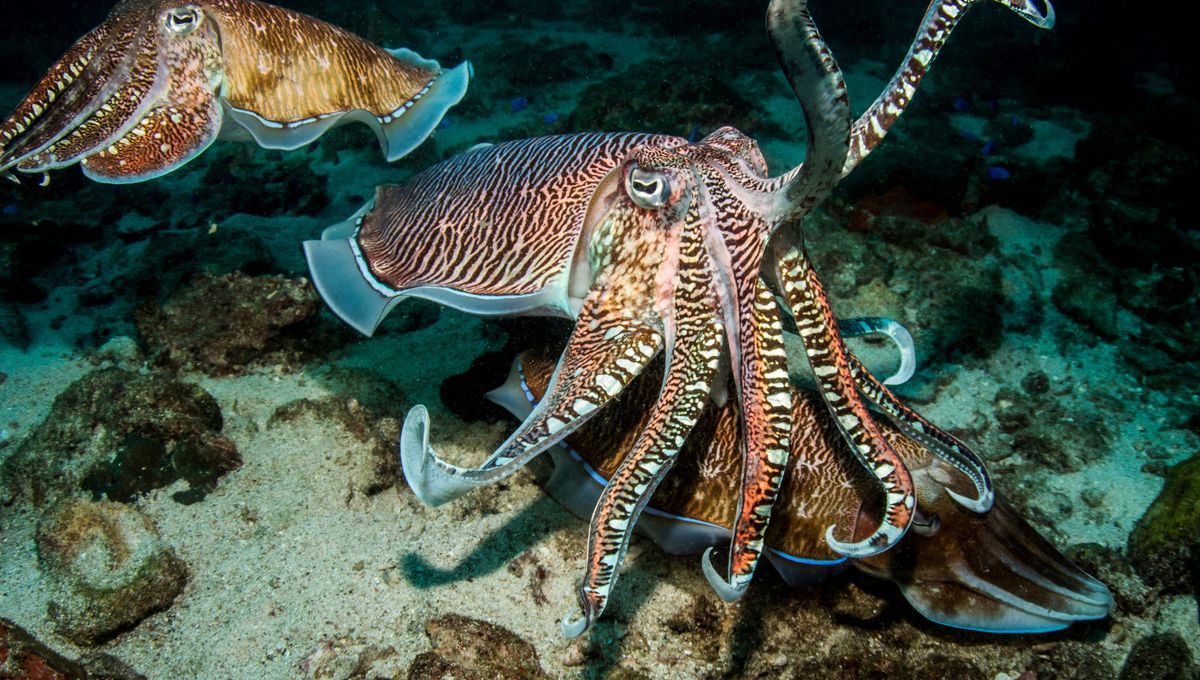
Cuttlefish cause their tentacles to undulate in ways that appear to carry specific meanings, at least to other cuttlefish, a new study reveals. Moreover, these messages can be conveyed not only by sight, but by sensing the movement they produce in water.
Bivalves aside, most animals have ways to communicate, such as a threatening roar or a sexy mating dance. Cuttlefish can convey more than most, being able to alter their colors to send signals, particularly to others of their species. Indeed, they’ve got so good at this that a cuttlefish can send contrasting messages in opposite directions simultaneously, such as an angry warning signal to a rival and a soothing message to a potential mate.
Cuttlefish combine these colors with body postures that reinforce the signal, such as raising or lowering their arms, but marine biologists have wondered if they might have other ways to get the message across. Now Dr Sophie Cohen-Bodénès and Dr Peter Neri of École Normale Supérieure have produced evidence they do, although their work is yet to complete peer review.
To the casual observer, cuttlefish appear to have 10 tentacles, but technically speaking, only the longest two fit the name – the eight shorter limbs are known as arms. Like their fellow cephalopods, octopuses and squid, these appendages are capable of very subtle movements, including creating a wave-like motion along the length of the arm.
Cohen-Bodénès and Neri observed two cuttlefish species, Sepia officinalis and Sepia bandensis, to look for repeated waves. They observed four “arm wave signs” they describe as “consisting of long-lasting, expressive, and repeated sequences of undulations.”
The pair videoed cuttlefish performing these waves and played the films to other cuttlefish. In baseball, this might be called a sign-stealing scandal, but in zoology, it’s ok. The cuttlefish observers sometimes waved back, and did so more often when the movie was right way up from their perspective than when the video was flipped.
On land, movements like this would be missed in the dark or by someone looking the wrong way, but the authors noted the disturbances the waves produced in the water. They wanted to see if the cuttlefish could recognize arm waves by feel.
The authors tested the cuttlefish’s responses to underwater speakers that replicated the disturbance caused by the arm movements. For a little extra twist, they played cuttlefish’s own movements back to the same individuals. With no visual cues to go on, the cuttlefish appeared to respond to the broadcast as if they could sense the signs.
Of course, even humans can feel pressure waves in water on our skin, but it’s unlikely we could distinguish an arm wave that way from something like a fish swimming past. The lateral line hair cells on the cuttlefish’s skin are thought to be what makes them much more sensitive, although the authors also note evidence that the eyes responded to the playback of waves without any visual imput.
The authors acknowledge they don’t know what the signs mean. Small cuttlefish are as talkative as larger ones, which contradicts the idea these are dominance displays. Juvenile cuttlefish make the same signs, calling into question their status as mating signals. The authors even report a bobtail squid making similar movements to a presumably uncomprehending shrimp.
The complex vocabulary of squid arm movements has already been studied, so it’s not surprising cuttlefish have them too. However, the fact they are able to recognize these movements by touch as well as sight tells us a lot about the cuttlefish sensory world.
A preprint of the study is hosted on bioRxiv.
Source Link: Cuttlefish Communicate With Arm Waving And Can Sense The Ripples With Their Bodies